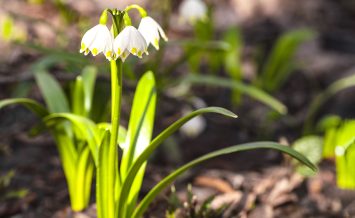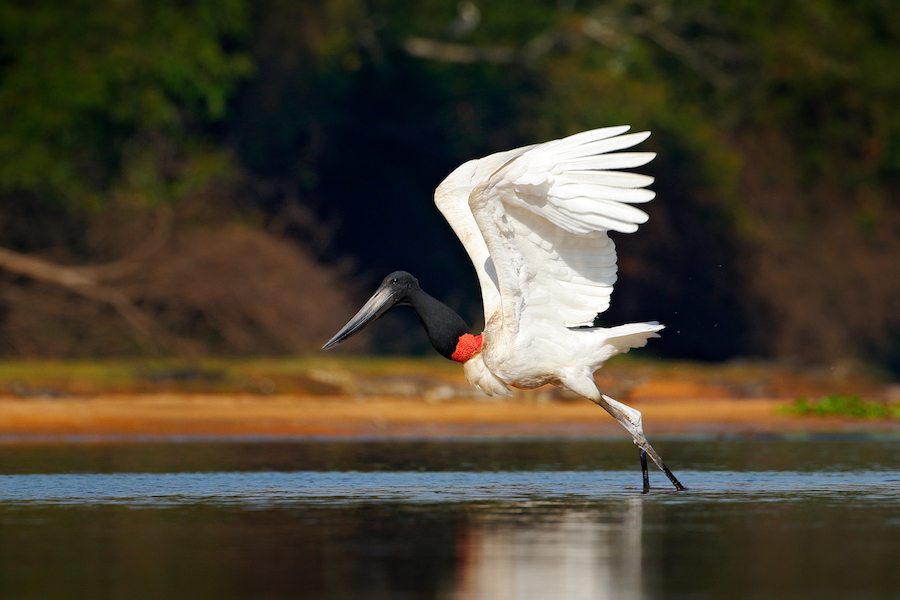Wildlife of the Pantanal
The Pantanal is a diverse landscape of wetlands, rivers and plains covering an area larger than the UK in the heart of South America. Spread across Brazil (mostly), Paraguay and Bolivia, it has the greatest density of wildlife in the whole of the Americas, making it the perfect place to spot impressive animals such as jaguars, caimans, capybaras and over 650 species of bird. A wildlife haven and a must-visit spot for all budding naturalists, we’ve rounded up our top species to see on your trip to the Pantanal.
Birds
With an unbelievable number of both endemic and migratory birds, the Pantanal is a twitcher’s paradise. Due to its position as a stopping point for several migratory pathways it is possible to see birds from all over the world, with some species coming from as far as Greenland.

The jabiru stork and the threatened hyacinth macaw are two species that are definitely worth ticking off your birding bucket-list whilst in the area. As the symbol of the Pantanal, large groups of jabiru storks are commonly seen wading through the shallows of the rivers in search of fish. The hyacinth macaws, who are categorised as a vulnerable species, are a less common site, with numbers as low as 5,000. However, due to increased conservation efforts these numbers are beginning to climb and if you’re lucky you might just catch a glimpse of their striking blue feathers darting amongst the trees.
Jaguars

The notoriously elusive jaguar is the largest cat in the Americas and the third largest in the world, after lions and tigers. Often hard to come across in the wild, this captivating species really comes into its own in the Pantanal due to abundance of prey and limited threat from poachers. The best way to observe jaguars in the Pantanal is by boat, where you can spot their dappled coats stalking the riverbanks in search of caiman and capybaras – their favourite prey.
Caimans

Possibly explaining the high numbers of jaguars, the Pantanal is home to over ten million caimans, making it the largest population of the species in the entire world. They are closely related to alligators and can reach up to eight metres in length, surviving on a diet of fish and small mammals.

Despite being common throughout the Pantanal, these reptilian creatures are perfectly camouflaged and can be difficult to spot. However, by taking a boat tour throughout the winding rivers, you might just be able to see a few watchful eyes lurking on the surface of the water.
Capybaras

As well as a variety of impressive predators, the Pantanal is also home to a few furrier residents such as the capybara. A highly sociable species, they communicate through a cacophony of barks, squeaks and whistles, which can be heard echoing across plains. These animated conversations are usually held between a family of capybaras congregating around the waters of the Pantanal.

Due to their plentiful numbers and social behaviour, it is common to encounter these large rodents whilst trekking, horse riding or even exploring the Pantanal by boat. As they are semi-aquatic, it is not unusual to see them swimming from riverbank to riverbank using their webbed feet to propel themselves.
Maned Wolves

Sometimes referred to as a ‘fox on stilts’, the often unheard-of maned wolf has achieved this nickname due to its long, slender legs perfectly adapted to the grassy plains surrounding the Pantanal. This animal has made our top species list due to its rarity, but if you want to see one on your trip then we suggest exploring the area on horse-back as dusk sets in. Maned wolves are largely crepuscular creatures, meaning they are most active during sunrise and sunset, so they usually come out to hunt in the evenings and being on horseback will give you a better vantage point amongst the long grass.
About Travel Local
TravelLocal is an online platform that connects travellers with local experts around the world. No one knows a country better than the people who live there and buying direct offers great value, a more authentic experience and a fairer deal for the people on the ground.



















